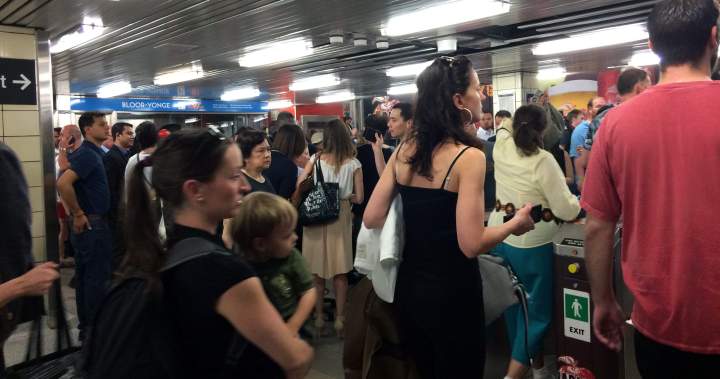Toronto’s morning subway chaos yesterday was a stark reminder of our urban transit system’s vulnerabilities – and the cascading effects when critical infrastructure fails.
I spent the morning talking with commuters at Bloor-Yonge station, where thousands of Torontonians found themselves stranded during peak rush hour after a fire shut down subway service between St. George and Broadview stations on Line 2.
“I’m going to be at least two hours late for work,” Melissa Chang told me as she tried to figure out alternative routes. “My boss is understanding, but that’s a half-day’s wages I can’t get back.”
The Toronto Transit Commission reported the service disruption began around 7:30 a.m. when smoke was detected near Castle Frank station. Emergency services responded quickly, but the investigation and safety protocols necessitated a complete shutdown of a critical east-west corridor.
By early afternoon, TTC spokesperson Stuart Green confirmed service had resumed with residual delays. “Safety is always our priority,” Green explained. “Our teams worked efficiently to identify the source of the smoke and ensure all systems were operating normally before restoring service.”
Mayor Olivia Chow addressed the incident during an unrelated press conference, acknowledging the frustration felt by commuters. “This morning’s disruption highlights why we need continued investment in maintaining our aging transit infrastructure,” she said. “The TTC moves 1.7 million people daily, and resilience in this system isn’t optional.”
The fire’s impact rippled throughout the city. Shuttle buses deployed as alternatives quickly became overwhelmed. Rideshare prices surged to nearly triple their normal rates – something Jacob Torres, a construction worker I met at Sherbourne station, couldn’t afford.
“I ended up walking almost 40 minutes to get to my site,” Torres said. “When the subway goes down, it’s the people who can least afford alternatives who get hit hardest.”
For Naomi Williams, a third-year Ryerson student, the disruption meant missing a midterm exam. “I’ve already emailed my professor, but it’s stressful not knowing if I’ll be penalized,” she told me while waiting for a crowded streetcar.
The TTC has faced increasing pressure over reliability concerns. Recent data from the transit agency shows a 12% increase in service disruptions compared to the same period last year. City councillor Josh Matlow, who sits on the TTC board, has been vocal about maintenance backlogs.
“We’re operating a transit system that in some sections is running on infrastructure from the 1950s and 60s,” Matlow told me by phone. “When we defer maintenance to address budget constraints, these are the consequences.”
Transit advocacy group TTCriders has been pushing for increased operational funding. “Every shutdown demonstrates why sustainable funding matters,” said Shelagh Pizey-Allen, the group’s executive director. “Without it, we’ll continue seeing these disruptions becoming more frequent, not less.”
What struck me during conversations with affected commuters wasn’t just frustration, but resignation. Many expressed a sense that transit disruptions have become an expected part of Toronto life – a troubling normalization of infrastructure fragility.
Fire investigators haven’t released the cause of yesterday’s smoke incident, but preliminary reports suggest an electrical issue in aging wiring systems near track level. This points to a broader challenge facing not just Toronto, but many North American cities with transit networks built decades ago.
The incident comes just weeks after the provincial government’s announcement of $367 million in additional transit funding for Toronto – a figure transit advocates call insufficient given the system’s needs. The TTC’s own capital plan identifies over $33.5 billion in necessary infrastructure investments over the next 15 years.
As service returned to normal by evening rush hour, the day’s disruption faded into memory for most riders. But for city planners and transit officials, it serves as another warning about the consequences of underinvestment.
Jennifer Wu, an urban planning professor at University of Toronto, believes these incidents should motivate more ambitious thinking. “We need to move beyond the cycle of crisis and temporary patches,” she explained. “Transit resilience requires consistent, predictable funding models that aren’t subject to political whims.”
As I left Bloor-Yonge station yesterday afternoon, trains were running again and the platforms had returned to their normal rhythm. But conversations with dozens of Torontonians revealed a persistent concern: not if, but when the next disruption will occur.
In a city defined by its growth and ambition, the question remains whether our transit infrastructure will keep pace with our needs – or continue to remind us of its limitations during our morning commute.






